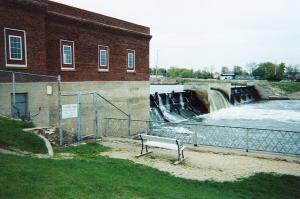How they can generate green energy and improve a municipality’s bottom line.
Dr. Gary C. Young is president and Mr. Ken V. Rieck is secretary/treasurer of Fort Dodge Hydroelectric Development Co. Inc. (FDHD). Young also is president of consulting company GYCO Inc. Contact Young at gycoinc@aol.com and Rieck at kenrie@aol.com. Clifford Phillips is vice president and CFO of Advanced Hydro Solutions (AHS) LLP. Contact him at cliff.phillips@advancedhydrosolutions.com.
Federal incentive payment of 1.8 cents/kWh for the generation of renewable energy—part of The Energy Policy Act of 2005 (EPACT)—increases the economic attractiveness of many potential hydro sites, and, as a consequence, could revive the building of low-head dams.

Many rural areas have existing low-head dams constructed in the early 1900s. Refurbishing these old assets could bring in increased revenues by generation of hydroelectric energy and used by the municipal governments and others. Any excess energy from the hydroelectric power plant would be sold to the existing grid system currently supplying power to the surrounding area.
With today’s high cost of electricity, a small community could find this hydroelectric generation attractive. Thus, utility executives, citizens, environmental groups, politicians, and commercial companies recently have expressed interest in low-head dams. This is particularly true for municipalities that abandoned hydropower generation in the 1950s.
Small-scale power plants have an electrical capacity of less than 15 MW; low-head dams have a dam height of less than 65.6 feet.
A typical existing low-head dam facility for potential refurbishment—the Nashua Mill Dam and Powerhouse, in Nashua, Iowa—is pictured.
